Alright, let’s be real: cleaning the water dispenser on your LG fridge isn’t exactly a fun weekend project. But here’s the thing—keeping it clean is about way more than just getting rid of water spots.
It’s about making sure your water is pure, refreshing, and free from bacteria and grime. Plus, a clean dispenser means your fridge will keep running smoothly for years.
Trust me, with the right routine, you can easily keep your dispenser in top-notch condition.
I’ve been doing it for 4 years, and it’s totally manageable. Ready for some insider tips and tricks?
Let’s dive in!
Why Cleaning Your LG Fridge Water Dispenser Matters
LG refrigerator’s water dispenser is a cornerstone of convenience. It provides instant access to refreshingly cool, filtered water. However, to ensure continued optimal performance and water quality, regular cleaning is essential.
Mineral deposits, bacteria, and even mold can accumulate within the dispenser over time. This not only compromises hygiene but may also affect water flow. To prevent such issues, LG recommends a simple cleaning routine performed every 30 days.
Understanding the Signs
Before we dive into the cleaning process, let’s identify the telltale signs that your dispenser needs some TLC:
- Strange Taste or Odor: If your water starts tasting a bit off or has an unusual smell, it’s time to investigate and clean.
- Visible Mold or Mildew: Spotting any green or black areas around the dispenser’s spout or tray? That’s a clear signal for a cleaning session.
- Decreased Water Flow: A slow or interrupted water flow often indicates a clogged filter or a need for thorough cleaning.
- Cloudy Water: Your dispenser’s water should be crystal clear. If it’s not, impurities might be lurking around.
Fast Fact: Regular maintenance not only ensures the quality of your drinking water but also prolongs the lifespan of your refrigerator. A clean dispenser works more efficiently and prevents unnecessary wear and tear on your appliance’s parts.
Gathering Your Cleaning Arsenal

Before we dive into the nitty-gritty of cleaning your LG fridge water dispenser, let’s get our tools and materials ready.
Think of it as gathering your armour and weapons before a battle—except this battle is against grime and bacteria, and your weapons are much friendlier!
Essentials You’ll Need:
- A Clean Cloth or Soft Sponge: To gently wipe and clean the surfaces without scratching your fridge.
- Mild Dish Soap or Water Dispenser Cleaner: Choose a mild cleaner to avoid any harsh chemical residues.
- Warm Water: The carrier for your cleaning solution, ensuring everything blends well.
- Cotton Swabs: Perfect for those hard-to-reach nooks and crannies.
- Vinegar (Optional): A natural disinfectant, great for dealing with bacteria and mineral buildup.
- A Straw Brush or Old Toothbrush: For the detailed scrubbing of dispenser parts like the nozzle and tubing.
Why These Tools?
Each tool and material plays a crucial role:
- Cloth/Sponge and Mild Soap: Ensures a gentle yet thorough cleaning of surfaces.
- Warm Water: Helps dissolve the soap and vinegar, making the cleaning solution more effective.
- Cotton Swabs: Reach where your fingers can’t, ensuring a complete clean.
- Vinegar: Acts as a natural, non-toxic cleaner, perfect for ensuring your water is safe to drink.
- Straw Brush/Toothbrush: Scrubs away stubborn stains and deposits that cloth or sponge can’t remove.
How to Clean LG Fridge Water Dispenser? step by step guide
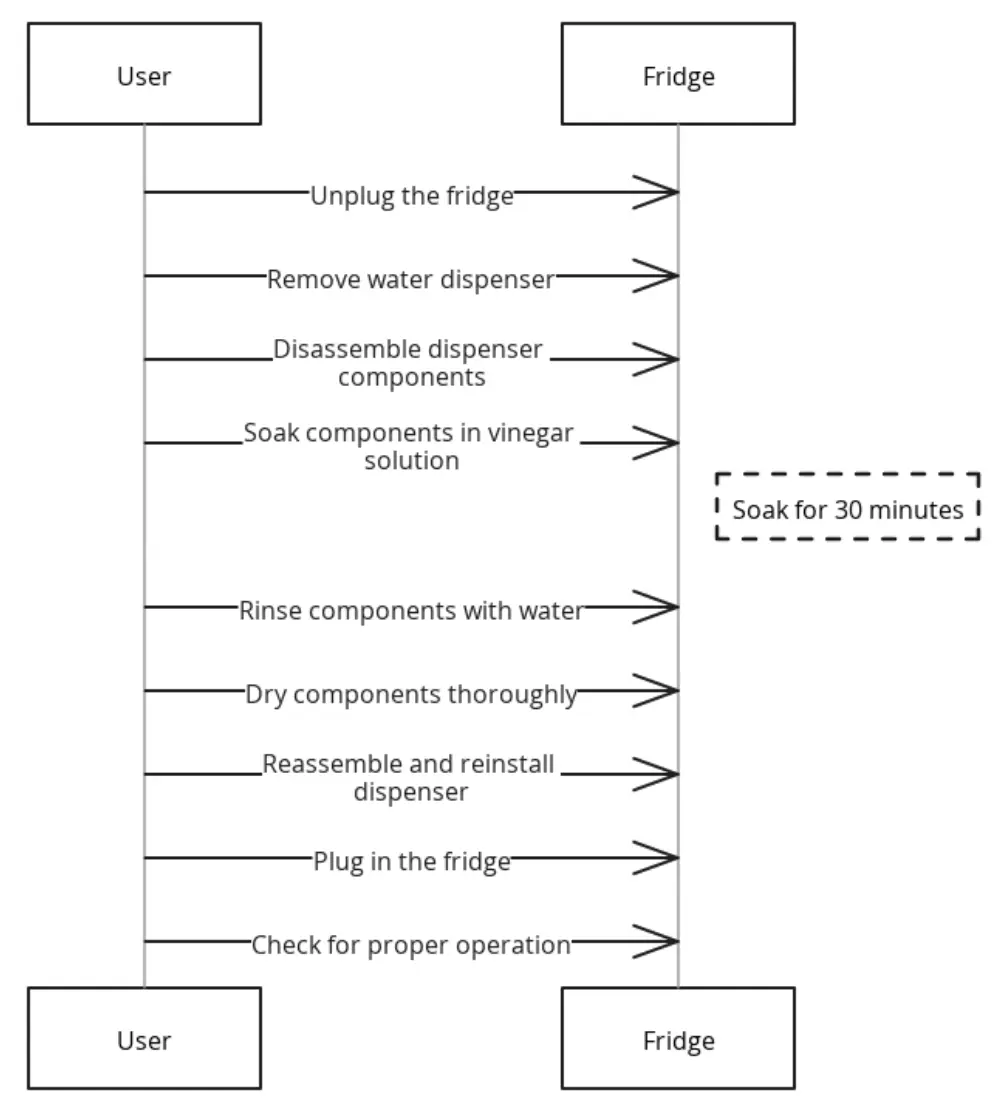
Even after a thorough cleaning, your LG fridge water dispenser might act up.
Don’t worry; it’s usually something you can fix without calling in the cavalry.
Let’s walk through some common issues and how you can troubleshoot them.
1. Low Water Flow or Pressure

Symptoms: Water trickles out slower than a snail at a marathon.
Causes: Clogged water filter, partially closed water supply valve, or kinked water line.
Solutions:
- Check the Water Filter: It might be clogged with debris. Consider replacing it if it’s been a while, as a clean filter can significantly improve water flow.
- Inspect the Water Supply Valve: Ensure it’s fully open. A partially closed valve can restrict water flow. If it’s damaged, it might need replacing.
- Examine the Water Line: Look for any kinks or twists. Straighten them out gently to clear the path for water flow.
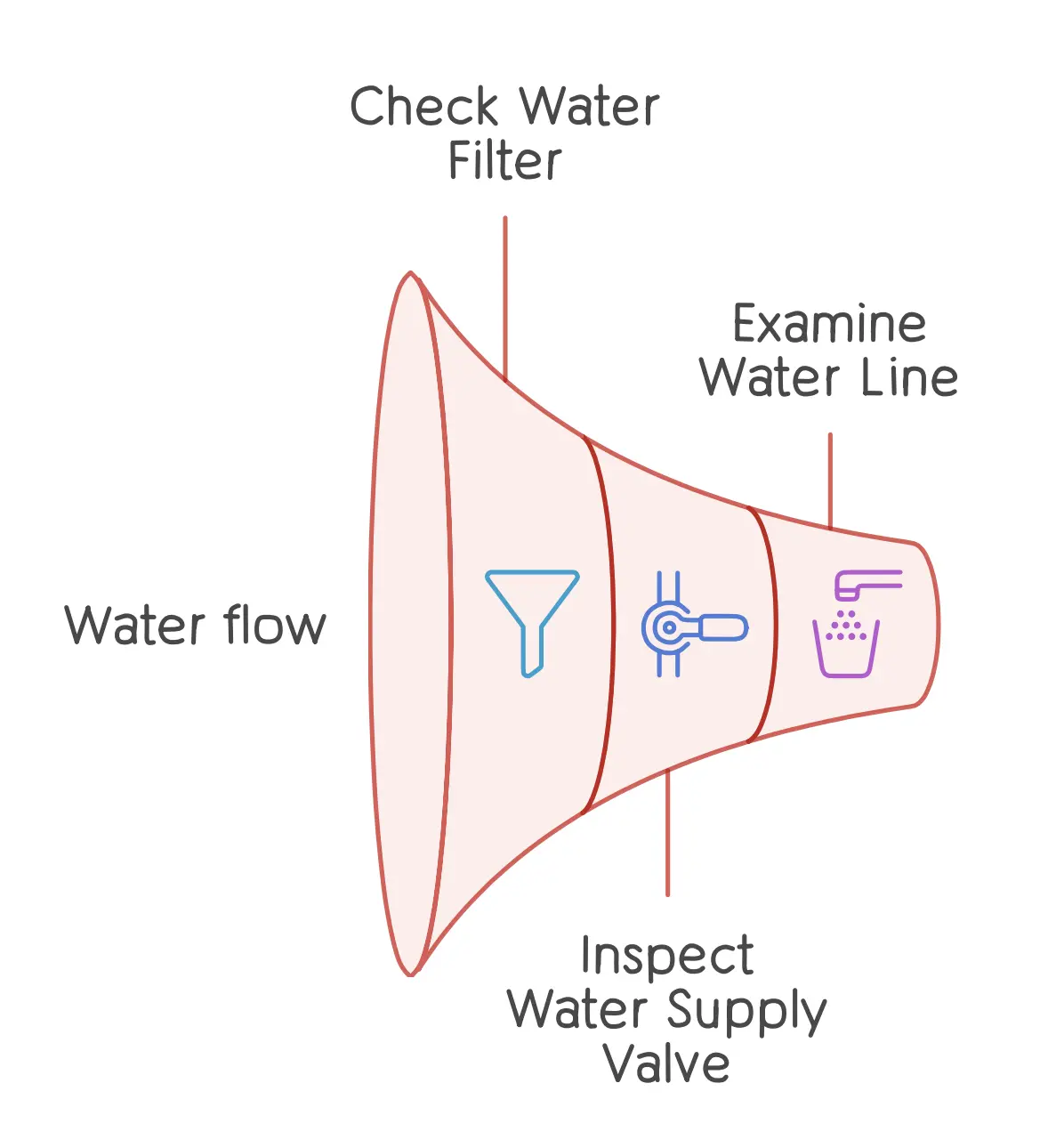
2. Unpleasant Taste or Odor in Water
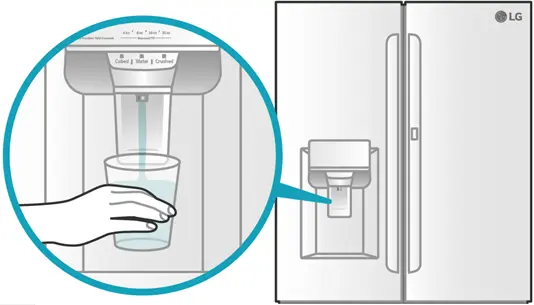
Symptoms: Your water tastes like it’s been on a world tour of your plumbing system.
Causes: Dirty water filter or stagnant water in the system.
Solutions:
- Replace the Water Filter: Old or dirty filters can cause unpleasant tastes and odours. Regular replacement keeps your water tasting fresh.
- Flush the System: Run a few gallons of water through the dispenser to clear out any stagnant water. This freshens up the taste and removes any funky odours.
3. Water Dispenser Not Working or Dispensing Inconsistently
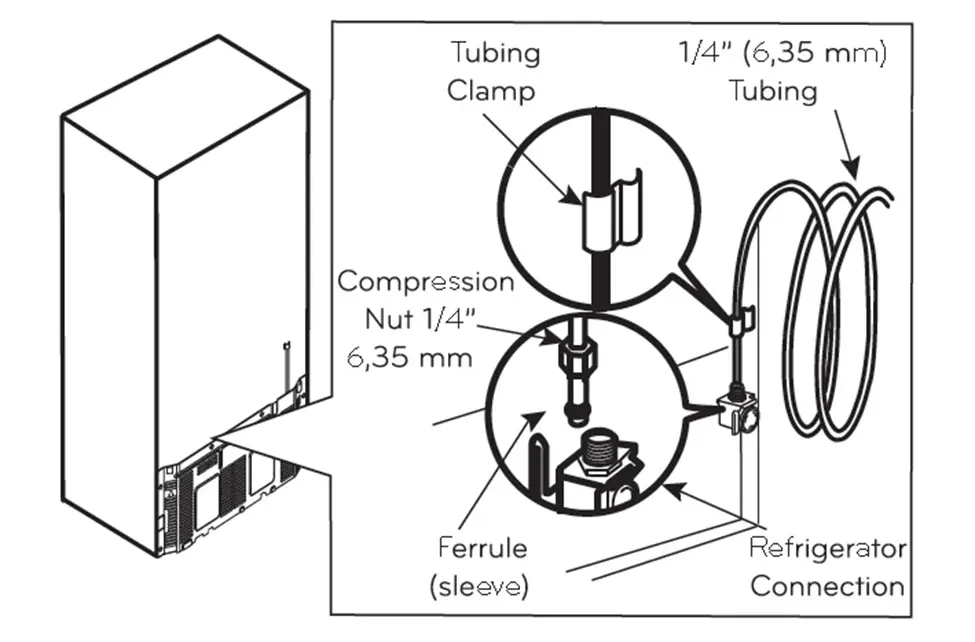
Symptoms: Your dispenser is playing hide and seek with your water.
Causes: Frozen water line or issues with the dispenser mechanism.
Solutions:
- Defrost the Water Line: If it’s frozen, carefully thaw it to restore proper water flow.
- Check the Dispenser Mechanism: Inspect the switches and control board. If something seems amiss, it might be time for a professional look.
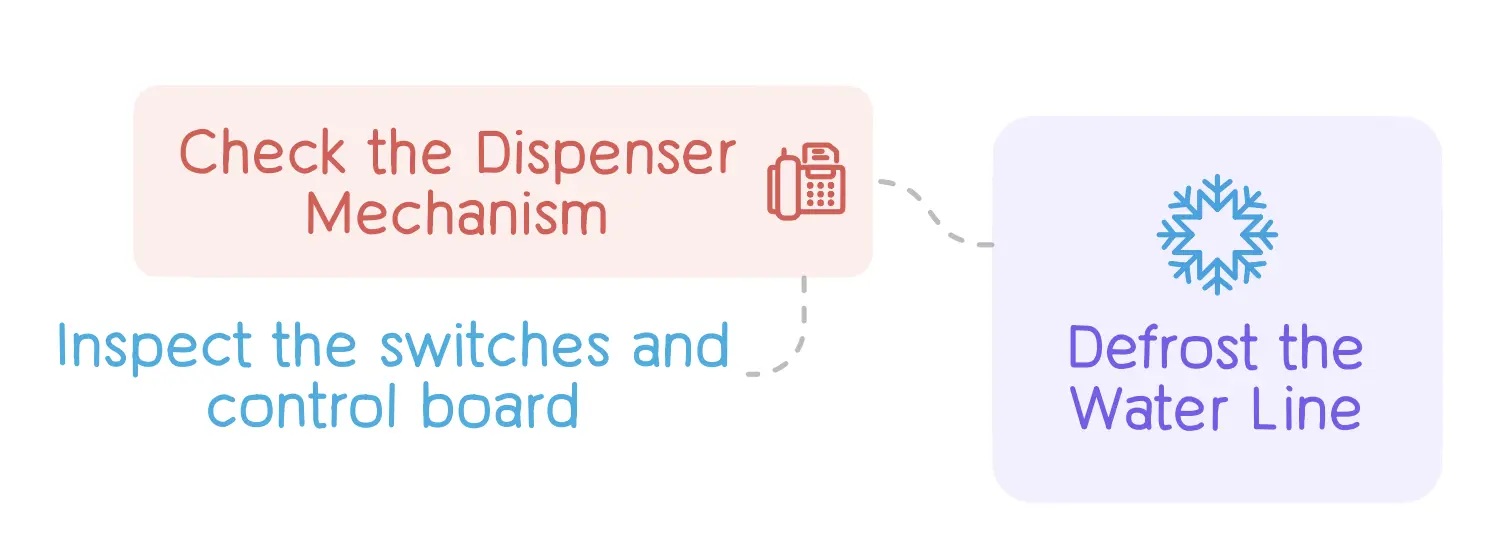
Maintenance Tips to Prevent Future Issues
After successfully troubleshooting, it’s crucial to establish a routine maintenance schedule for your LG fridge water dispenser.
This not only prevents future issues but also ensures you enjoy clean, fresh-tasting water day in and day out.
1. Regular Cleaning Schedule
- Why It’s Essential: Prevents the accumulation of bacteria, mold, and mineral deposits.
- Frequency: Aim for a thorough cleaning every 30 days to keep your dispenser in top-notch condition.
2. Use a Water Filter
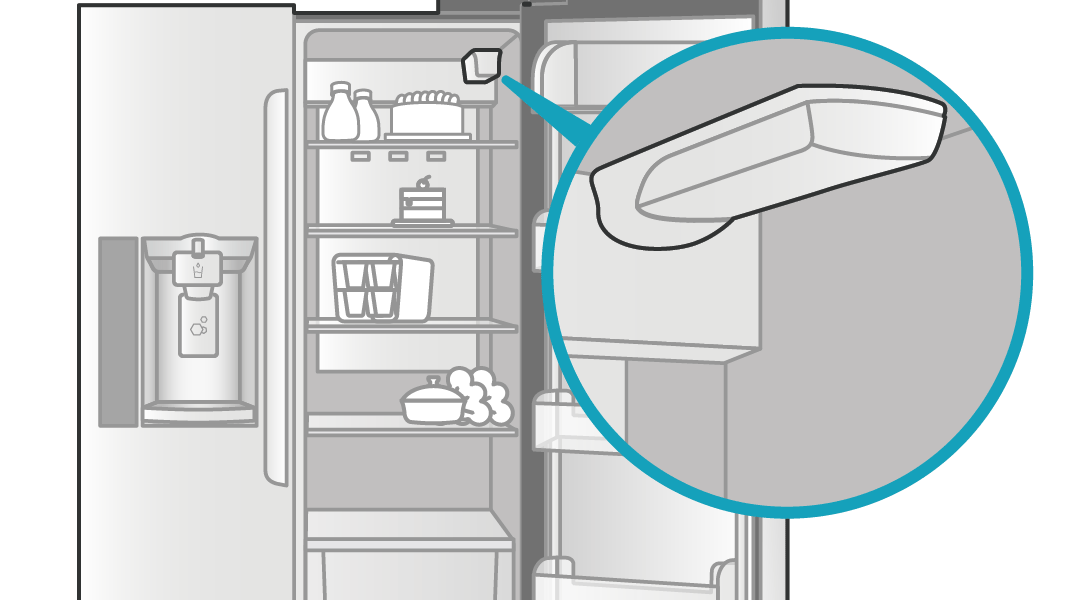
- Role of the Water Filter: It reduces impurities, like chlorine and sediment, improving water taste and minimizing mineral buildup.
- Replacement Schedule: Follow the manufacturer’s instructions, typically every 6 months or after 200 gallons of water is filtered, to maintain optimal water quality.
3. Regular Inspections for Leaks or Damage
- Check for: Leaks, drips, or signs of damage on the dispenser, tubing, seals, and fittings.
- Action Plan: Address any issues promptly to avoid further complications. Replace damaged or worn-out components as needed.
4. Avoid Harsh Cleaners and Abrasives
- Cleaning Dos and Don’ts: Use gentle, non-abrasive cloths, sponges, and cleaning agents.
- Reason: To prevent scratching or damaging the dispenser’s surfaces, preserving its functionality and appearance.
5. Stay Proactive with Component Replacements
- Component Lifespan: Regular inspection helps identify worn-out or damaged parts.
- Importance of Timely Replacements: Ensures the efficiency and longevity of your water dispenser, guaranteeing a reliable source of drinking water.
Conclusion
Tired of funky-tasting water from your LG fridge? Here is the good news: keeping it clean and refreshing is surprisingly simple.
Just a quick cleaning every month and swapping the filter when needed is all it takes to banish buildup and bacteria. Think of it as more than just maintenance – it’s a guarantee that every sip from your LG fridge is pure and delightful.
Ready to get started? Read on for these easy tips to keep your water dispenser (and your days) flowing smoothly.
Frequently Asked Questions (FAQs)
How often should I replace the water filter in my LG refrigerator?
Replace the water filter every 6 months or after filtering 200 gallons of water. This ensures the quality of the water and the performance of the water dispenser.
Can I use different brands of water dispenser cleaner?
Yes, you can use any brand as long as it’s safe for refrigerator water dispensers. Always follow product instructions for proper usage.
What should I do if the water dispenser is still not working after troubleshooting?
If troubleshooting doesn’t resolve the issue, contact LG customer service or seek professional appliance repair services.
Is it safe to clean the water dispenser with bleach?
Yes, but ensure to dilute the bleach and rinse thoroughly afterwards to remove any residue. Never use undiluted bleach.
Can I apply this cleaning guide to other refrigerator brands?
While this guide is tailored for LG refrigerators, the general cleaning principles can be adapted to other brands. Always consult the user manual for specific instructions.
